 All it takes is some simple math regarding the essential oil industry to realize that a large portion of essential oils in the marketplace are not genuine essential oils (reports of 25% – 40% of essential oils may be adulterated, diluted, or outright fake). Something you get when you buy from EOX is not only great customer service and a 100% Satisfaction Guarantee, but a Certificate of Analysis with every essential oil we offer through EOX. Just go to any individual essential oil or essential oil blend, and you’ll find the certificate as a clickable link to a PDF file.
All it takes is some simple math regarding the essential oil industry to realize that a large portion of essential oils in the marketplace are not genuine essential oils (reports of 25% – 40% of essential oils may be adulterated, diluted, or outright fake). Something you get when you buy from EOX is not only great customer service and a 100% Satisfaction Guarantee, but a Certificate of Analysis with every essential oil we offer through EOX. Just go to any individual essential oil or essential oil blend, and you’ll find the certificate as a clickable link to a PDF file.
Having said that, I want to empower you, the consumer, the enthusiast, the manufacturer, the practitioner or aromatherapist to make informed choices regarding your essential oil purchases. The better informed you are, the better you can appreciate the quality of the essential oils found on EOX. It’s a “win win” for everyone!
It’s amazing to see how quickly a single news article spreads these days, and for the past 2 years, I’ve seen countless articles with this exact message; “The only valid test available for essential oils is GC/MS, which is Gas Chromatography/ Mass Spectroscopy.”
I sincerely couldn’t disagree more. There is an extremely valid test for genuine essential oils and that is our 5 senses. In the Western world, we’ve been taught to dismiss and ignore much of our sensory and intuitive input. But we are an integral part of nature, and nature is an integral part of us. Part of reclaiming that connection is by trusting what our senses and intuition is telling us.
Now, before I go into the methods of testing our essential oils at home, let’s first discuss the common methods by which essential oils are adulterated or faked.
Typical Adulterations
There are several typical methods of producing an adulterated essential oil. Some fragrance oils are quite remarkably similar to natural plant essences, but a good nose and intuition can sense the false fragrance surprisingly well. In fact, on March 20, 2014, researchers discovered that the human nose has roughly 400 types of scent receptors that can detect at least 1 trillion different odors (1). That is vastly beyond the previous estimate of just 10,000 scents. That is a powerful sense we have at our disposal naturally!
So, typical adulterations are:
- Fragrance oils – typically blended with a carrier oil, such as grapeseed oil, since grapeseed is the most neutral smelling of all oils. Fragrance oils are inexpensive to produce, and are always synthetic. Most don’t have a single plant essence in them, and will not have any of the effects that a genuine essential oil will have.
- Diluted essential oils – basically essential oils that have been “cut” with a neutral oil such as grapeseed oil or other carrier oil. Diluted essential oils, depending on the level of dilution, can be difficult to detect as well, although most carrier oils will have some color to them. This color will carry into the diluted oil.
- Oil infusions – a common “kitchen” method of making an oil. Take a carrier oil such as grapeseed, add fresh herbs or flowers, boil for 6 hours, and strain. These often look and smell like an essential oil, but rarely have anywhere near the clarity of a true essential oil.
Now, depending on the quality of the essential oil in question, it can be difficult to test at home, but certainly not impossible. Below is a list of tests you can do without a Gas Chromatography unit whenever you are suspicious of the quality of your essential oil:
- TRUST YOUR SENSES: The greatest detector of genuine essential oils is our senses and our intuition. We’ve been taught from a very young age to distrust our intuition, to disregard our connection to the plant world, and to feel self-conscious when we speak of feeling such a powerful and varied range of emotional responses from scents. Take a few drops of your essential oil and place into a clean, clear glass. Look at how the oil leaves the dropper:
- Did it look and feel like an oil? Was it watery at all?
- Did it remain in the shape of a half-moon or did it immediately disperse in the bottom of the glass? Tilt the glass and see if the oil runs like water, or is resistant to movement like you would expect an oil to be.
- Does it look and smell as you expected it to?
- Does it smell natural, organic, and exactly like a plant or flower?
- Touch the oil and rub it between your fingers. It should feel thick, viscous, and just as you would expect an oil to feel. For minty oils, you should feel a tangible cooling sensation, and so on.
- USE WHITE PAPER: A great way to check the purity of an essential oil is to examine it visually. This requires a small, clear vial to place some of the oil in question into, a bright light that can be focused on the oil, and as bright white of paper as you can find. Place some of the oil into the clear vial, and place it in front of the white paper. Shine the bright light onto it and examine.
- Does the oil look clear?
- Is there anything suspended in the oil?
- Does the oil appear to be a single material inside the vial, or do you see waves, much like heat rising off the hot pavement in summertime?
- Is there any separation whatsoever in the oil or any thin layer floating at the top of the oil?
- LET IT SIT OUT: Genuine essential oils will not evaporate overnight like a few drops of alcohol or water will. Those few drops you placed in the bottom of the glass should be there the next morning, most-likely still possessing a scent, albeit a less intense scent for those oils with a Top Note as their main characteristic.
- FREEZE YOUR OIL: Freezing your essential oil will not harm it, but if it’s been diluted with a carrier oil such as a vegetable oil, it will separate from the essential oil. Also, if there’s water in your essential oil, it will freeze and separate as well. Alcohol doesn’t freeze, but it may separate from the essential oil in the freezer as well.
- COMPARE PAST OILS: I always keep a reference sample of a previous essential oil purchase for at least 6 months, in a sealed glass container, away from light, and refrigerated. This way, I can reliably compare essential oils from batch to batch. And, contrary to what you might initially think; if your essential oil is exactly the same consistency and scent, from order to order, this may actually be a bad thing! Mother Nature is infinitely variable, and plants will vary from harvest to harvest, location to location. A genuine essential oil will likely smell differently from batch to batch, and can be a great indicator of an oil that is genuine.
- CHECK THE LOT NUMBER: This is not always possible, but even essential oils should have a lot number for traceability. Keep a journal of lot numbers for your essential oils when you purchase them, and compare when you purchase again. If the same lot number is on your bottle for a purchase a year later, you know that the essential oil you purchased is at least a year old. If the oil seems exactly the same as the oil you had, it may indicate that there are synthetics in the oil, as most essential oils, even when properly stored, will lose some of their initial strength and character.
- INTENDED EFFECTS: I saved this one for last because once we throw all the data way, once we stop focusing on numbers and oil separation and lot numbers and comparisons, we need to ask ourselves the most key question: Did the essential oil have the effects I was expecting? Adulterated and counterfeit essential oils will never have the intended effect because they do not contain the concentrated plant essences that are responsible for the various effects eo’s have on our mind and body.
Again, the use of essential oils is an art that is in perfect harmony with our senses. They are abundant with natural energy and it’s easy to feel a connection to genuine, natural products such as the high quality, guaranteed authentic oils that we only offer here at EOX. I may sound like a broken record, but learning to trust your senses and your intuition when it comes to essential oils is one of the most powerful means you have at your disposal.
And, perhaps worst of all, is if you are using adulterated or outright fake essential oils, as mentioned above, they will not have the therapeutic effects you’re looking for, and everyone loses. Essential oils are incredibly concentrated bursts of plant energy, with effects that are far beyond placebo effects. Anyone who has experienced the powerful healing, soothing, and numerous other positive effects of essential oils will know what that connection feels like. Trust that connection that only genuine essential oils can provide. Trust the results of proper application and use of essential oils can bring. Trust yourself and your observations regarding that specific oil. Sit with it. Contemplate it. Smell it. Play with the oil by warming it, adding it to a candle wick, placing it in a sachet that you place under your pillow, and so on.
Have fun. Experiment. Connect.
Lastly, it’s clichè to ask for comments from readers, but I would be very interested to hear any other methods people have discovered to help identify and verify the authenticity of their essential oils. After all, EOX is intended to be a co-op, powered by you, and we’re thankful for all of the input we receive daily here at Essential Oil Exchange.
~~~~~~~~~~
REFERENCES:
Williams, Sarah CP. “Human Nose Can Detect a Trillion Smells.” ScienceMag.com. N.p., 12 Mar. 2014. Web. 12 May 2015.


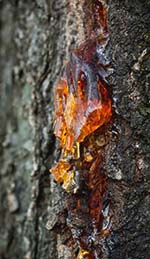


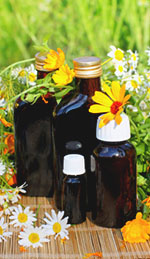
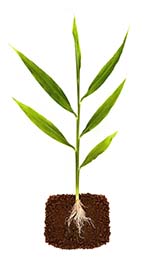

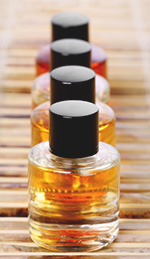
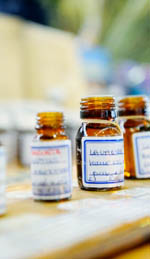 Whether you are just now embarking upon the incredible journey of learning about and using essential oils, or have been working with these valuable medicines for some time, you will soon find that selecting the best possible essential oil supplier makes all the difference in your experience. The truth is, not all essential oils are created equal. And, with the demand and market for these wonderful gifts of nature growing exponentially and rapidly, it is becoming more and more difficult to determine which essential oils are truly high quality, and which are cheap knock offs of the real thing.
Whether you are just now embarking upon the incredible journey of learning about and using essential oils, or have been working with these valuable medicines for some time, you will soon find that selecting the best possible essential oil supplier makes all the difference in your experience. The truth is, not all essential oils are created equal. And, with the demand and market for these wonderful gifts of nature growing exponentially and rapidly, it is becoming more and more difficult to determine which essential oils are truly high quality, and which are cheap knock offs of the real thing.